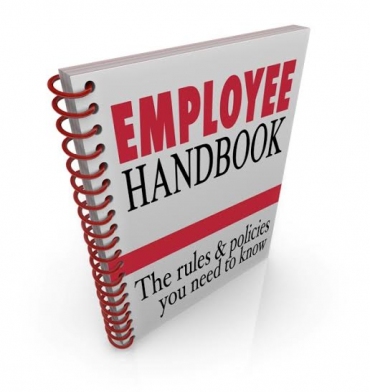I recently read an article by a ‘business guru’ who said that none of his businesses have ever needed a full Employee Handbook and that HIS Handbook can fit onto the back of a business card…and here’s what it reads;
“All employees use their common sense, have respect for others, grow professionally and personally, create value and treat our shareholders’ assets as is they were their own.”
There is significant logic in what this ‘business guru’ has said.
If we lived in a perfect world and every employee was honest, fair, fully committed100% of the time and had the same high level of common sense as every other employee then this would work.
The brutal reality is that the ‘assets’ of the business aren’t their own and the likelihood of an Admin Assistant having the same drive and passion as the CEO is very slim. So what if an employee becomes pregnant? What process does the business follow? How much Maternity pay is she entitled too and for how long?
We’ve now established that if we operated in a perfect world, the above is a suitable Handbook to have!

However, we don’t live in a perfect world and as much as it would be great to assume that all your employees will always get on and that there will never be anything to deal with, that’s not the case. So what should your Employee Handbook cover:
1. You need to have policies and procedures that are compliant with all obligatory employment legislation – for example you need to include details for Statutory Sick Pay (SSP) and Statutory Maternity Pay (SMP).
2. Include additional policies that provide protection and clear guidance for business related activities such as dress code and Social Media Policy
3. Ensure any policies requiring ACAS Best Practice Guidance are followed
4. By making sure your Employee Handbook follows the key 3 points above you are giving yourself a decent level of protection if things do go quite according to the Employee Handbook of our ‘Business Guru’ above.
If an employee with more than 26 weeks continuous service is matched for adoption, then they are entitled to 52 weeks Adoption Leave which is split between 26 weeks Ordinary leave and 26 weeks Additional leave
Your adoption policy need to cover a number of bases but most importantly it should clearly define the process for Adoption Leave so that it is easy to follow for both you the employer, and your employees.
Key areas to make sure you’ve covered in the policy include
- Purpose and Scope
- Policy
- Leave
- Starting Ordinary Adoption Leave
- Notification Requirements
- Statutory Adoption Pay (SAP)
- Contractual Benefits
- Holidays
- Returning to Work process
- Contractual Benefits during adoption leave
As you can see there are a number of things that you need to get right as they are legal obligations as an employer. If mis-managed can sometimes lead to employment disputes. By having a solid, compliant policy in your Employee Handbook you are reducing the risk of mis-handling and creating a smoother process for your employees.

